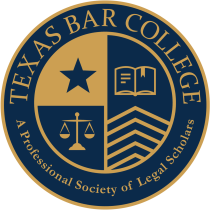McKinney Law Firm Investigating Possible WARN Act Violations Relating to U.S. Logistics Closing
/US Logistics Announces Closure and Bankruptcy Filing
Texas-based U.S. Logistics Solutions (USLS) has filed for Chapter 7 bankruptcy liquidation, citing the abrupt termination of financial support from its lender as the cause. The sudden closure last Thursday has left numerous truck drivers, dock and warehouse workers, and office personnel without jobs, as reported by the Houston Chronicle.
Employees were informed of the shutdown through text messages and conference calls, a move that bypassed the customary WARN notice—a federal requirement that mandates a 60-day warning for mass layoffs. This decision by Ten Oaks Group, the Charlotte, North Carolina-based private equity firm that owns USLS, has sparked significant controversy and confusion among the affected workers.
Former USLS president, Eric Culberson, expressed his disappointment over the handling of the closure, stating, “The timing of this closure did not give me the chance to thank my team for their commitment and support to our customers and to each other,” in a LinkedIn post earlier this week. Many employees discovered they would not receive their expected paychecks, adding to their distress.
USLS, headquartered in Humble, Texas, filed its Chapter 7 petition last Friday in the U.S. Bankruptcy Court for the Southern District of Texas. The company’s petition lists its assets as up to $100 million, with liabilities ranging between $100 million and $500 million. It also indicates that USLS has up to 5,000 creditors, with funds expected to be available for unsecured creditors.
What Can Affected Employees Do?
Many employees discovered they were being fired and would not receive their expected paychecks, adding to their distress. Under the Worker Adjustment and Retraining Notification (WARN) Act, employees who experience mass layoffs or plant closures without the required 60-day notice can seek several forms of relief through a WARN Act claim. The primary remedies available to employees include:
Back Pay: Employees are entitled to back pay for each day of the violation up to a maximum of 60 days. This amount is calculated based on the higher of their average regular rate of pay or their final regular rate of pay.
Benefits: Employees may also seek compensation for the loss of benefits, including the cost of medical expenses that would have been covered under an employee benefit plan during the violation period.
Moving Quickly is Important
Employees who wish to protect their WARN Act benefits should contact us immediately about their potential case. We are actively speaking with potential clients and will be looking to move quickly to protect workers’ entitlement to WARN Act benefits in the court.










